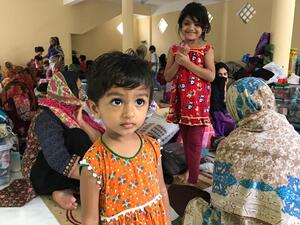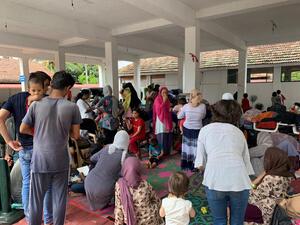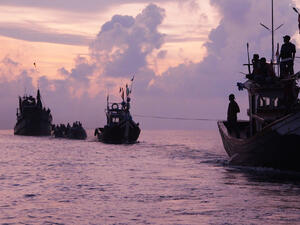Sri Lanka: displaced numbers grow
Sri Lanka: displaced numbers grow
In north-east Sri Lanka, UNHCR is assisting a rapidly growing number of people displaced by fighting over the past week in Muttur between government forces and rebel Liberation Tigers of Tamil Eelam (LTTE). Local authorities report more than 50,000 people are now displaced and sheltering in 51 sites in Trincomalee District - a big jump from the 21,000 we mentioned on Tuesday.
The numbers have swelled in the last few days as people move out from the conflict areas and contact has been re-established with areas previously in the front line.
Water, sanitation and medical needs are priorities in the relief effort, particularly as overcrowding is increasing and putting pressure on facilities in the main reception area of Kantale.
Operating from our base in Trincomalee and Colombo headquarters, UNHCR is sending urgently needed relief items - plastic sheeting, cooking sets, hygiene kits, other non-food items - to the areas of displacement and distributing through local networks of NGOs, the international NGO Muslim Aid and the local authorities.
To help people to get access to information and trace separated family members, UNHCR has purchased ten special portable phones for use in IDP [internally displaced persons] centres.
We are still unable to secure humanitarian access to certain areas of Trincomalee District, including Muttur town and the division of Eachchilampattai, where civilians are reportedly trapped by ongoing military operations and an unknown number of people displaced.
We are also concerned by reports that several thousand people have fled further south to Vaharai, on the northern border of neighbouring Batticaloa District. We have been unable to access the area for the last two weeks, but reports indicate the situation for IDPs in the division is deteriorating and urgent assistance is required. Initial figures indicate at least 4,000 newly displaced people have arrived in the area, but details are still sketchy at this stage. We are particularly concerned that recently displaced populations may include injured people who have fled the fighting further north. Unfortunately, ambulances are currently only allowed into the south of the area to pick up wounded civilians.
Also worrisome are reports of ongoing fighting close to IDP centres around Seruwila, to the south of Trincomalee town.





